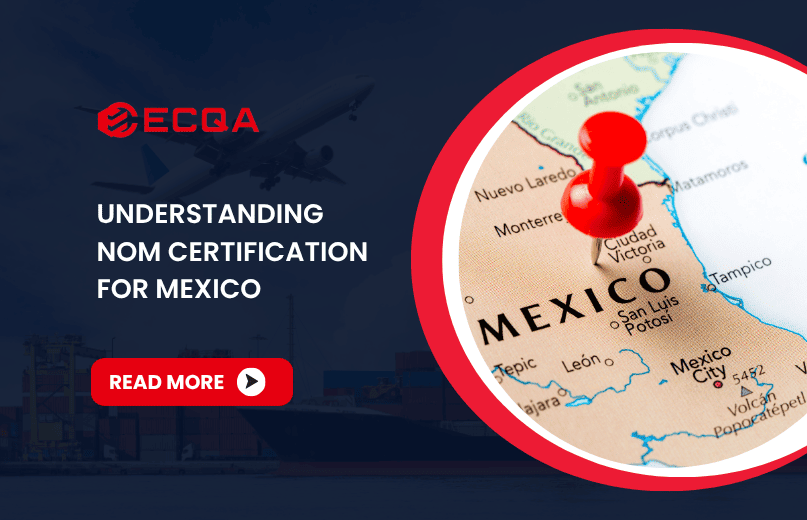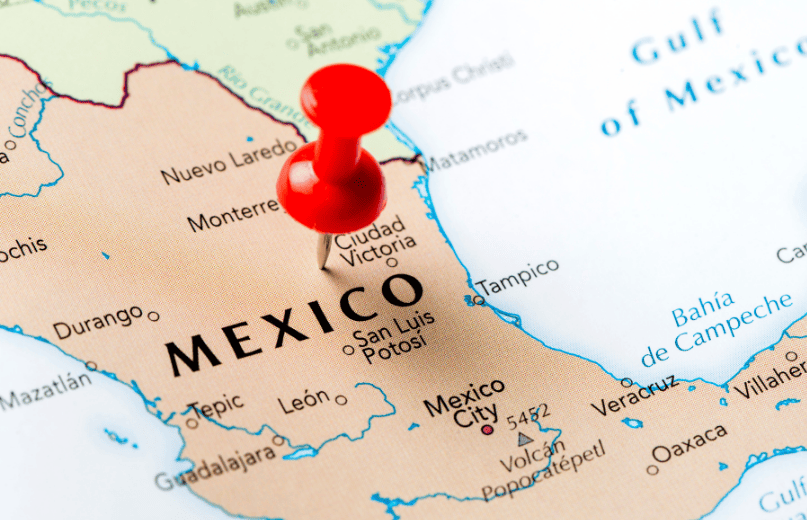
Understanding NOM Certification for Mexico
NOM certification is a mandatory compliance requirement for many products sold in Mexico. The system is designed to ensure that goods meet national safety, performance, and labeling standards before entering the market. Importers, manufacturers, and brands that supply consumer goods to Mexico depend on NOM approvals to release shipments, avoid customs delays, and protect end users. A clear understanding of how NOM standards work allows companies to prepare the right documentation, testing evidence, and labeling formats early in the supply chain.

Overview of NOM Standards and Their Governance
Normas Oficiales Mexicanas, or NOM standards, are official technical regulations issued by the Mexican government. They cover areas such as electrical safety, mechanical performance, telecommunications, chemical limits, labeling, and hygiene. Each standard applies to a specific category of products and contains measurable requirements that must be met before goods are distributed or sold.
The development and enforcement of NOM regulations involve several government agencies. The Secretaría de Economía supervises the broader regulatory framework. The Dirección General de Normas (DGN) manages the creation and publication of standards. PROFECO conducts consumer protection activities, including market inspections and product sampling. COFEPRIS regulates products related to health, cosmetics, hygiene, and food-contact materials. These agencies coordinate to ensure that all products entering the national market adhere to established safety and quality criteria.
NOM standards are legally binding for applicable product categories. Compliance is not optional. Products that fall within the scope of a specific NOM must have the required testing, certification, and labeling in place before they are imported or sold. This legal structure gives importers clear guidance on the conditions necessary to maintain access to the Mexican market.
Product Categories Requiring NOM Certification
Many consumer and industrial products require NOM certification. The system covers a broad range of categories because of Mexico’s emphasis on safety, consumer protection, and trade consistency. Some of the most common regulated areas include:
Electrical and Electronic Products
Electrical safety is one of the most established NOM areas. Standards define insulation requirements, energy stability, fire resistance, component safety, and structural integrity. Products such as home appliances, power tools, IT equipment, audio-visual devices, and chargers often fall under NOM-003, NOM-001, or NOM-019.
Lighting and Energy-Related Products
Lamps, LED lighting, luminaires, and energy-consuming devices must comply with performance and energy-efficiency requirements. NOM standards set out testing methods and labeling requirements to help consumers understand energy usage. This category is closely monitored during market inspections because of the potential impact on household safety.
Telecommunications and RF Equipment
Wireless devices, communication terminals, and radiofrequency equipment require testing under NOM-208 and associated telecom rules. The standards outline limits for frequency stability, connectivity, and electromagnetic characteristics. Products must meet these criteria before importation.
Toys and Children’s Products
Mexico applies NOM standards for mechanical safety, chemical limits, flammability, and labeling of toys and childcare items. Regulations are strict because of the higher safety expectations applied to children’s goods. Importers supplying toys need to demonstrate that their products meet all required test results before distribution.
Textiles, Footwear, and Apparel
Several NOM standards define labeling requirements for textiles and footwear, including fiber content, manufacturer information, and care instructions. Authorities monitor these categories closely because labeling errors are common. Products must follow the exact Spanish-language format defined in the standard.
Kitchenware and Food-Contact Products
Food-contact materials are regulated under NOM standards that control chemical migration, material purity, and hygiene conditions. Plasticware, cookware, and kitchen utensils must be tested through accredited laboratories to verify that they do not release harmful substances during use.
Cosmetics and Hygiene Products
Certain personal care products fall under COFEPRIS and require compliance with NOM standards related to safety, composition, and labeling. Mexican authorities expect clear ingredient listings, usage information, and responsible-party details.
These categories reflect the broad scope of NOM regulations. Importers benefit from reviewing the precise requirements for their product type to confirm which standard applies.
Testing Requirements Under NOM Standards
Compliance with NOM standards begins with technical testing. Accredited laboratories conduct evaluations based on the methods defined in the relevant standard. The goal is to confirm that the product meets the minimum safety and performance criteria required for market access.
Testing can include electrical safety checks, mechanical testing, chemical analysis, energy-efficiency measurements, and functional performance evaluations. Laboratories follow strict procedures to ensure repeatable and reliable results.
For electrical and electronic products, labs assess insulation resistance, thermal performance, component strength, and construction. Lighting products undergo photometric tests, lumen measurements, and efficiency checks. Toys require mechanical tests for sharp points, chemical analyses for heavy metals, and flammability assessments. Textiles and footwear are evaluated for material composition and labeling accuracy. Food-contact products undergo migration tests to confirm safe use with foods.
Test reports must come from laboratories recognized or accredited under the Mexican system. Authorities accept reports generated by accredited bodies that follow ISO/IEC 17025 laboratory practices. Importers should ensure that all documentation is valid, complete, and aligned with the specific version of the NOM standard referenced during certification.
Testing failures usually relate to design weaknesses, component inconsistencies, or labeling that does not match product characteristics. Early coordination with accredited laboratories helps reduce the likelihood of delays during certification.
Factory Quality Control Expectations
Some NOM standards require a review of the production facility to confirm consistent manufacturing quality. Authorities want to ensure that products shipped to Mexico match the certified samples submitted for testing. Although the level of scrutiny varies depending on the product type, certain factory documents and QC systems are commonly reviewed.
Inspectors may examine quality manuals, production flow, component inspection records, calibration logs, and batch traceability systems. Facilities that follow structured QC systems or certified ISO 9001 processes usually demonstrate better readiness. Mexican regulators consider these systems as evidence of consistent production, which supports ongoing compliance.
The goal of factory evaluation is to verify that manufacturing processes do not introduce risks to product safety or cause deviations from the tested samples. Importers that rely on multiple suppliers or frequent production changes benefit from strong quality control management to maintain continuous compliance.
Product Labeling Requirements for Mexico
Labeling requirements are one of the most important elements of NOM compliance. Authorities conduct frequent checks on labeling accuracy during market surveillance and at the retail level. The standards require precise Spanish-language labeling, formatted according to the specific regulations applicable to each product category.
Labels often need to include:
- product name and category
- manufacturer or importer details
- usage and safety instructions
- warnings for specific hazards
- electrical ratings where applicable
- serial numbers, batch codes, or identification markings
- required NOM compliance marks
- energy labels for certain devices
- Spanish terminology that follows official formatting rules
Incorrect labels lead to product detentions, rework, or removal from the market. Companies benefit from preparing artwork early to meet all formatting and language specifications. Label placement, legibility, and durability are also important because authorities check them during market inspections.
Certification Models Used in the Mexican Market
Mexico applies several certification models depending on the product type and business structure. These models determine how products demonstrate compliance and how ongoing surveillance is managed. The choice depends on whether the company plans regular shipments, single batches, or specialized production runs.
Common certification models include type approval, lot-by-lot certification, series-production models, and certification tied to a local representative. Mexican regulations require an appointed legal entity within the country to act as the responsible party for compliance. This entity handles regulatory communication and ensures that all documentation remains valid during the certificate’s lifespan.
Products that fall under series-production models require ongoing quality assurance to maintain compliance. In contrast, lot-by-lot certification is used for shipments with unique characteristics or irregular import patterns. Understanding these models helps importers determine the best structure for their business needs.
Documentation Requirements for NOM Compliance
Authorities expect comprehensive documentation that supports all elements of product compliance. This documentation allows regulators to verify product characteristics, production control, and test results.
Common documentation includes:
- technical specifications and user manuals
- accredited laboratory test reports aligned with the applicable NOM
- artwork for labeling and packaging
- manufacturing quality control documents
- declarations of conformity
- importer registration information
- product drawings or schematics
- safety data, if applicable
The quality and completeness of documentation directly influence the approval process. Clear labeling artwork, valid test reports, and consistent manufacturer details reduce the risk of questions from authorities during validation or customs checks.
Differences Between NOM and Other International Compliance Schemes
Companies often compare NOM with certification systems used in other major markets. Although certain testing concepts appear similar, each compliance framework is built around its own legal structure, technical requirements, and regulatory oversight.
CE Marking (European Union)
CE marking demonstrates conformity with EU directives related to safety, health, and environmental protection. It supports free movement of goods within the EU. The scope and testing methods differ from NOM, and CE marking does not replace the mandatory requirements for Mexico.
FCC and UL (United States)
FCC focuses on electromagnetic interference and radiofrequency performance. UL evaluates safety for electrical and electronic products. Both systems operate under U.S. regulations and follow different testing procedures, documentation formats, and recognition pathways. Their approvals do not satisfy NOM obligations.
SASO and GCC (Middle Eastern Markets)
SASO and GCC compliance frameworks address safety, energy efficiency, and labeling for the Gulf region. They rely on their own national standards and verification schemes. Their conformity requirements do not substitute NOM certification.
Position of NOM in the Global Compliance Landscape
NOM certification is mandated under Mexican law. It defines specific technical criteria, testing obligations, labeling formats, and oversight procedures that are unique to Mexico. Approvals from other regions cannot be used as a direct replacement.
Understanding these distinctions helps companies avoid assuming that international certifications automatically meet Mexican regulatory expectations. Each market maintains its own rules, and NOM applies specifically to products entering or sold within Mexico.
Common Challenges Importers Face With NOM Compliance
Importers often face practical difficulties when preparing products for NOM certification. Many of these issues occur during testing, labeling, or documentation review. The most frequent challenges include:
Labeling Issues
- Spanish terminology does not follow official formatting rules.
- Required elements such as importer information, warnings, or ratings are missing.
- Label layout or placement does not match the NOM specifications.
- These issues commonly lead to customs delays or requests for corrective action.
Testing and Technical Documentation
- Test reports come from laboratories that are not accredited for NOM evaluation.
- Reports reference older or incorrect versions of the standard.
- Test scope is incomplete and does not cover all required parameters.
- Factories use components or materials that differ from the certified sample.
- Such discrepancies create non-compliance risks during product review or market inspections.
Quality Control and Production Consistency
- Lack of calibration records for testing equipment.
- Insufficient traceability between batches.
- Missing or inconsistent QC documentation.
- Factories with weak quality systems struggle to demonstrate production alignment with the certified model.
Local Representative Requirements
- Importers do not have a legal entity in Mexico to act as the responsible party.
- Certificates cannot be issued without this local representation.
- This requirement is essential for regulatory communication and market oversight.
Companies preparing to enter the Mexican market benefit from understanding the requirements set out in the applicable NOM standards. Accurate documentation, compliant labeling, and consistent product quality strengthen the foundation for reliable market access. Importers can reduce compliance risks by confirming that their product specifications, testing records, and production controls align with Mexican regulatory expectations. Clear preparation supports smoother customs clearance and a more stable compliance outcome across future shipments.

 Request Free Sample Report
Request Free Sample Report